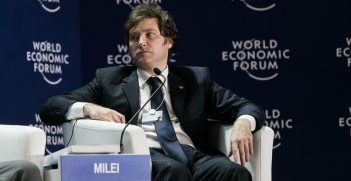Young People May Be Learning Politics Through Tweets, Reels, Spoofs, And Memes

A funny video in TikTok or a meme, may seem like a reductive way of getting to know about politics. But for the average young person – distrustful of political leaders and parties – this incidental, informal exposure to politics may be key to political engagement.
Young people today are digital natives: voters under 30 have never known a time without the internet. For them the online context is the only context.
In 2021, the University of Canberra’s Digital News Report revealed that more than half of Gen Z were using social media as their main source of news. Although this fell by 8 percentage points in 2022, video sharing app Tiktok saw its usage double from 7 percent to 15 percent since 2020, with about a third of the users using it for news consumption.
And this was reflected in youth political attitudes ahead of the recent Australian federal election: Twitter analysis found that, compared to the 47 percent of the general population, 63 percent of the young voters considered the online actions of political candidates extremely important for the vote.
Long-term trends from the Australian Election Study (AES) shows that younger generations are in fact more engaged than their older counterparts when it comes to online processes, such as following a campaign or election online, whereas their democratic attitudes and involvement in offline traditional processes such as persuading others to vote for a party and contributing money to a campaign remain comparable.
Unsurprisingly, the digital communication network plays a central role in shaping young people’s political attitudes and behaviours, which are substantially different from those of young people 20 or 30 years ago.
Long-term societal transformations such as easier access to information have resulted in differentiated younger cohorts. Members with higher levels of educational attainment and broader cognitive skills are the so-called “critical” citizens who are more demanding and critical of the performance of political leaders and institutions.
Second, and perhaps consequently, society has seen a rise in preferences for alternative, extra-parliamentary, elite-challenging, and non-institutional forms of participation. Development of the online platform has led to networked individualism: individuals interact in the social networks which they have had a significant part in constructing. Increasingly, young people are integrating social media use into their existing organisations and political communications.
Contracting labour markets has brought disruptions to social life. The uncertain environment raises individualistic values, weakening links to society, reducing social trust and confidence in institutions. The uncertainty young people have faced at the beginning of the 21st century to start and stabilise their careers further delayed their political start-up.
Focusing on complexities in transition to adulthood, the life phase known as “youth” is protracted today in comparison to three decades ago. It takes longer today to accumulate key demographic markers such as tertiary qualifications, or a stable job which make politics more relevant to one’s life. Simply put, young people are lacking the time, money, and resources to invest in political commitments. Consequently, it also means weaker ties to the community that develop through regular involvement, such as trade unions, religious associations, and political parties.
But social media or social networking sites are somewhat combatting this process. Through social media, young people are participating in lifestyle, sporadic mobilisation efforts in informal networks, engaging in issue-based action such as political consumerism, adopting veganism, signing petitions, making graffiti or street art, and spontaneously participating in protest activities.
Political parties have fewer incentives to invest in cultivating loyalty as their grass-roots bases dwindle. Besides, parties focus on older people when trying to mobilise citizens during elections. This is partly because youth issues are viewed as diverse and partly because young people are less likely to be partisan or align with a political party. The consequence for new cohorts is that they have weaker psychological identifications, feel underrepresented, and are less exposed to direct and indirect mobilisation. This further diminishes the mobilising power of political parties.
In an era of weakened party loyalties, social media provides a powerful tool for mobilising people. In addition to providing a quick, low-cost, and suitable channel, the nature of political discourse on social media also appeals more to younger people. Often advocacy or opinion-based, punchier content with quick takeaway messages mobilise those with lower levels of trust and with active aversion towards politicians. Various social movement organisations are increasingly replacing political parties in their linkage function — they may no longer provide the primary network to tie young citizens to politics.
Several platforms like Twitter partnered with Australian Electoral Commission (AEC) to launch the #MyFirstDemocracySausage campaign to encourage young Australians to register to vote, and for first-time voters to share the issues most important to them. In a historic rush to register, about 80,000 young voters registered in the last 24 hours before the rolls closed. More people, mostly the youth, registered for this election in a single day than any other before. Social media was a key reason why. A Twitter and YouGov poll found substantial difference in issues salient among young and older voters.
Meanwhile, politicians and political parties, albeit immaturely, used social media sites in hopes of swaying the vote. The Labor Party took advantage of the targeted nature of advertising on social media, to capture those who lean left but take a rather dim view of party politics. Independent candidates did media campaigning differently with independent candidate for Wentworth, Allegra Spender, using Google ads focusing on local issues.
The viral video sharing app Tiktok – with the average user in Australia spending about 17 hours a month on the app – turned into a campaigning playground. Greens leader, Adam Bandt, jumped onto the Tiktok bandwagon with his “sexy shrek in the sky” gyrating Parliament House. Consuming such content incidentally may have had a positive effect on young people, especially those who are not politically active.
As digital natives, late millennials and Gen Zers are more vulnerable to misinformation. Younger generations report coming across misinformation more often than older generations. In a recent YouGov poll, young people said they were deterred by misinformation or disinformation (80 percent), bad behaviours such as online fights (53 percent), and negative campaigning on social media (30 percent).
Therefore, as misinformation increases online, there is a real risk for youth political disengagement. The recent Digital News Report: Australia 2022 shows that Australians are becoming more cautious about receiving their news from social media platforms. New ANUpoll 2022 data resonates this, showing more than 80 percent of Australians are at least somewhat distrustful of news in social media. In fact, young people are now turning to traditional news more often, with fewer saying it is their main source of news. Notably, these trusted news sources are increasingly online, over the internet, with more Australians now paying for online news and using smart TVs to access news.
Social media is a more fluid media environment, spawning new services between electoral cycles, generating new communicative conventions for its diverse userbases, but also not free from its ever-evolving risks of widening inequality and encouraging discrimination. As social media apps rise and fall – all while the digital network becomes an increasingly core mainstream communication channel – more targeted research is required to keep track of whether and how it can be used to maintain a positive political impact on young people while mitigating the inevitable risks that it comes with.
Ms. Intifar Sadiq Chowdhury is a PhD Candidate at the Australian National University’s (ANU) School of Politics and International Relations. Her research tackles the important question of whether young people are turning away from democracy. Prior to this, Intifar obtained a double degree in Science (Biochemistry/Genetics) and International Relations (Honours) at the ANU. Currently, she works as a data archivist at the Australian Data Archive (ADA).
This article is published under a Creative Commons Licence and may be republished with attribution.





